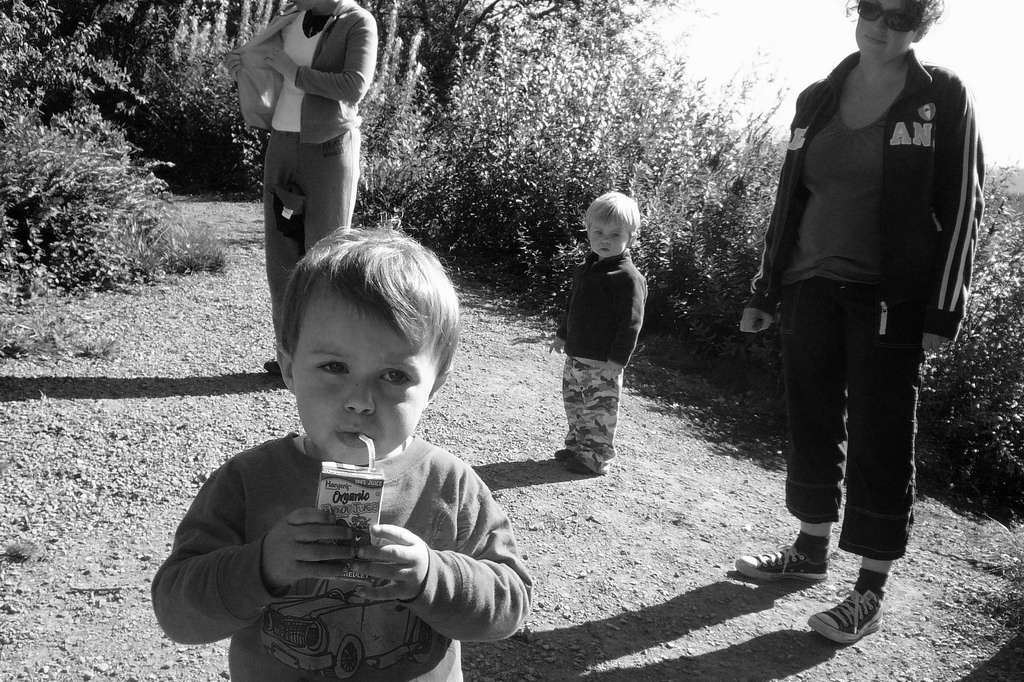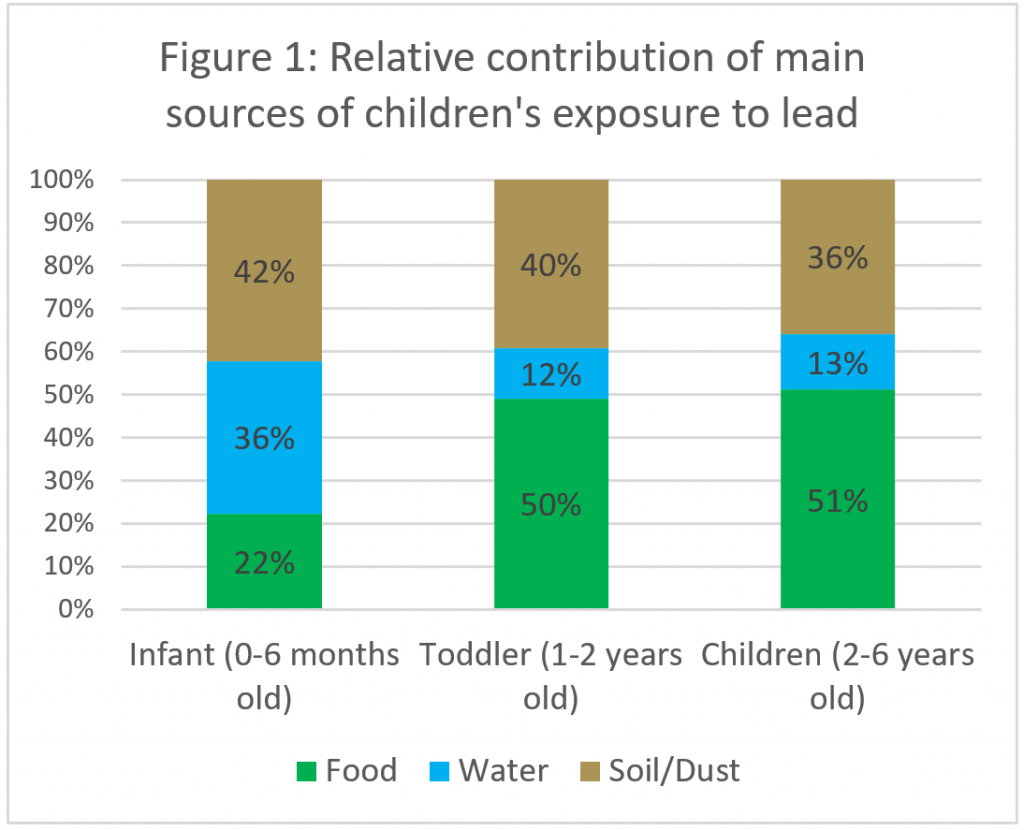 There is no safe level of lead in the human body, according to the US National Toxicology Program’s report “Health Effects of Low-Level Lead“.
There is no safe level of lead in the human body, according to the US National Toxicology Program’s report “Health Effects of Low-Level Lead“.
“Overall, the NTP concludes that there is suffcient evidence that blood Pb levels <10 μg/dL and <5 μg/dL are associated with adverse health effects in children and adults.”
These adverse health effects include:
- Neurological
- Immunological,
- Cardiovascular
- Renal
- Reproductive
- Developmental effects
Children are especially susceptible to the negative effects of lead exposure.

As children get older, over half of their lead exposure comes from the food they eat. Lead paint particles found in dust and dirt are no longer the primary sources. Obviously, children living in older homes are at a greater risk from soil/dust exposure.((http://blogs.edf.org/health/2017/12/15/childrens-lead-exposure/))
Additionally, babies fed formual rather than breastfed have a higher concentrion of lead in their bodies. This is due to the water used in mixing the formula.((http://blogs.edf.org/health/2017/02/03/sources-of-lead-exposure-infant-toddler/))
Common Toddler Foods Contain Lead
The US Food and Drug Administration stested common food eaten by toddlers. The agency states, “Overall, these data indicate levels of lead and cadmium in infant/toddler foods, on average, are relatively low and are not likely to cause a human health concern.”((https://www.fda.gov/Food/FoodborneIllnessContaminants/Metals/ucm521427.htm))
Here are the results including the lead in ppb(2) from greatest to least averages. Sample sizes were relatively small from just 6 to 76. Ranges are in parenthesis:
- Quinoa 22.2 (0.4 – 98.0)
- Raisins 18.1 (1.8 – 151)
- Toddler Puffs 19.1 (3.3 – 91.0)
- Infant/Toddler Rice Cereal 15.6 (5.0 – 82.0)
- Teething Biscuits 12.0 (2.0 – 131)
- Oat O-Shaped Cereal 7.8 (3.3 – 16.4)
- Infant/Toddler Multigrain Cereal 7.2 (6.0 – 8.0)
- Grape Juice 5.6 (0.3 – 41.3)
- Peanut Butter 5.3 (3.3 – 45.2)
- Infant/Toddler Non-Rice Cereal 4.8 (0.4 – 17.0)
- Grapes 3.7 (3.3 – 7.6)
- Apples 3.3 (3.3)
- Juice Boxes and Pouches 3.3 (0.3 – 17.0)
Although the FDA assures parents these levels are “relatively low”, scientists collectively agree there are no safe limits of lead, especially for children. The top end of the range for quinoa, toddler puffs, teething biscuits, raisins, and rice cereal are alarming. Recently, levels in grape juice are under review.
Why does the FDA Allow Greater Lead Limits in Grape Juice Than Water?
Codex Committee on Contaminants in Food (CCCF) purpose is to “establish or endorse permitted maximum levels or guidelines levels for contaminants and naturally occurring toxicants in food”. This international organization is part of the World Health Organization and the Food and Agriculture Organization of the United Nations.
CCCF set the maximum limit for lead in grape juice at 50 ppb in the 1980s. Food manufactures rely on CODEX recommendations to ensure their products are safe.
Last month, Codex met in the Netherlands to reevaluate maximum lead levels in grape juice. The US lead working group recommended lowering the rtate to 40ppb withouth doing research. The Environmental Defense Fund explains:
The working group appeared to look no further than the recent levels of lead in the international grape juice market and selected 40 ppb because 97-98% of sampled products currently comply. The working group considered 30 ppb but decided that it was too restrictive, as only 94-96% of grape juice would be compliant. Eighty-five percent of the samples would comply with 20 ppb, the most “protective” level considered. Again, the human health effects of these decisions were not considered.((http://blogs.edf.org/health/2018/03/05/fda-lead-grape-juice/))
40ppb is greater than what is allowed for lead in drinking water and bottled water. In fact, it is eight times the maximum level of lead allowed in bottled water!
Although grape juice is not a the top of the list tested by the FDA and well under the Codex standard, only 30 samples were tested. The range was from 0.3 – 41.3ppb.
Grape juice is a common ingredient in juice blends. Children are the largest consumers of grape juice, unless it’s fermented (wine is also contaminated with lead). They are especially susceptible to the adverse effects of lead consumption. We need strong limits to protect our children.
Image: Shawn Anderson on Flickr CC BY-NC 2.0
Leave a Reply